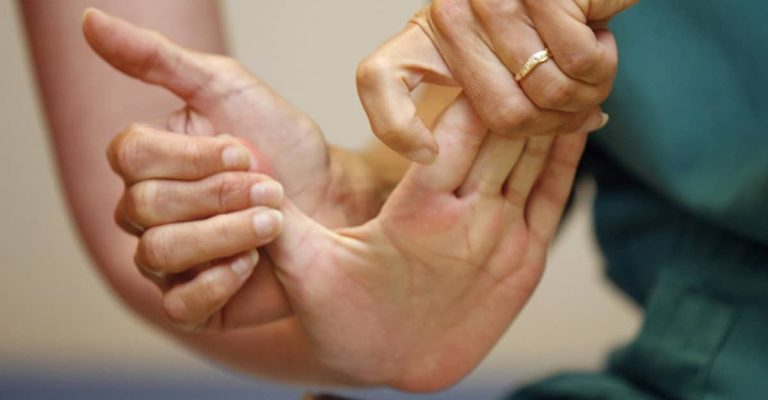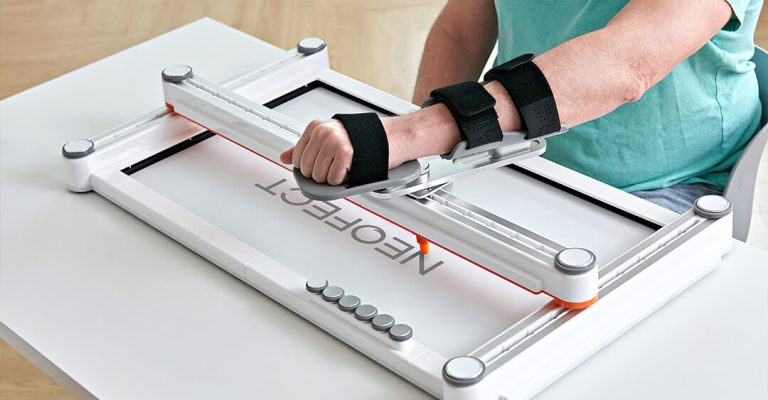
Recovering after a stroke may be a difficult process. Among other things, your brain must relearn abilities lost due to the stroke.
Recent research demonstrates that the brain is robust and capable of adjusting after a stroke. This indicates that recovery is more likely than previously assumed.
A stroke may frequently deprive a patient of arm mobility, making basic actions like moving the arm forward or gripping and releasing things difficult. Performing simple arm exercises at home for stroke patients, in conjunction with ongoing treatment and goods, enables stroke survivors to regain normal arm function and enhance their everyday lives.
Exercise is vital while you concentrate on healing and recognize that outpatient treatment may not be enough exercise. It is often necessary to augment with at-home workouts.
Before beginning any new fitness plan, please talk with your doctor or another certified healthcare practitioner.
You must engage your brain with exercise and activity to restore motor control after a stroke. The more enjoyable and involved you are throughout your workouts, the better!
Passive exercise, also known as active-assisted exercise, utilizes your non-affected side to aid your afflicted arm in acting. Although you are not “doing it yourself,” passive movement stimulates neuroplasticity, the process by which your brain rewires itself.
Place your hands palms down on the table and twist your wrist, so your fingers point towards your body for this exercise. Slowly slide your body rearward, keeping your elbows straight until you feel a stretch on the inside of your arm. If necessary, lean on the table for support.
Place your forearm on the table, palm down, with your hand over the table’s edge. First, lower your hand and gently stretch the ligaments and muscles with your other hand. Lift your wrist down and sideways while gently extending the extended wrist with your other hand, leaving your forearm on the table.

These arm exercises for stroke patients are ideal for anybody who has reduced upper-extremity movement. Exercise should always be difficult but never irritating. Start where you feel most at ease for long-term success.
Begin this arm workout by sitting at a table with a water bottle in front of you. Place your forearms on the table and interlace your fingers. Place your hands on a little hand towel to minimize friction and make sliding smoother.
Then, sliding your arms over the table, push the bottle across the table. Bend your elbows and slowly move your arms back until you are sitting straight again. 10 times through this arm workout.
Lace your fingers together and wrap both hands around the water bottle for this upper extremity workout. Then, move your arms in huge circular motions. Concentrate on extending your afflicted arm as you move in a large circle. You could feel a stretch in your shoulder, all the way down to your wrist.
We’re now progressing to increasingly challenging arm exercises for stroke victims. While many individuals can do these exercises, others with severe stiffness or paralysis may not be able to do so quite yet. That’s OK since successful arm workouts for stroke patients don’t require making the most difficult motions initially. It is about engaging the brain with therapeutic movements appropriate for your skill level.
Place your forearm on a table and make a fist with your hand. Then, extend your arm to ‘punch’ a water bottle. Then, while maintaining your forearm on the table, bring your arm back towards you, bending the elbow and pulling the shoulder blade back.
Again, try to avoid shrugging your shoulders. Doing the exercise slowly and carefully rather than using the incorrect muscles is preferable. Repeat this punching motion ten times.
Place a water bottle on one side of the table within your range of motion for this arm workout. Then, loop your wrist around the bottle’s neck.
Push the bottle across the table with your arm. If you can do that without moving your body, that’s fantastic! It’s also helpful if you need to move your body to do this activity. You’re still working on retraining your brain and restoring arm mobility.
These are the most demanding upper extremity exercises on the list. Don’t be disheartened if you can’t accomplish them yet. As you improve through your at-home arm rehabilitation program, you may work your way up to them.
Hold a tiny weight in your hand while standing or sitting. Bend and straighten the elbow gently. Rep till you reach your limit of endurance. As the elbow strengthens, gradually increase the number of repetitions.

This is the most demanding upper extremity workout, concentrating on the hand, arm, and shoulder. Take additional care to do the maneuver properly.
Hold a water bottle in your afflicted hand and put your arm out to the side while sitting on the edge of your chair, bed, or sofa.
Raise the water bottle with your arm straight. You must move your whole arm rather than just shrugging your shoulders or tilting to the side.
Resistance exercise is an excellent approach to counteract any muscular atrophy that may have happened during recovery and build muscle strength if you have adequate mobility in your arms. Load, such as weights, machines, resistance bands, or even your body weight, is used in resistance training.
Strength training is not required for a successful arm rehabilitation routine. It all depends on what keeps you challenged and motivated.
Sit on the ground with your knees bent and your hands on the floor, pointing forward. Push through your hands to elevate your bottom slightly off the floor. Repeat as you gain strength.
With your weights in hand, extend your arms so that your elbows are 90 degrees bent. With your hands pointing forward, your upper arms should be parallel to the floor.
Straighten your arms above your shoulders and raise the weights over your head. Maintain your stance and move your arms symmetrically.
Stroke is a prevalent condition in persons over 65, and your risk rises after age 55. According to the CDC, almost 800,000 individuals in the United States will suffer from a stroke yearly, with one person dying every four minutes. Those who survive may have a worse quality of life due to the repercussions of brain impairment. A stroke is a dangerous medical illness that may have long-term implications.